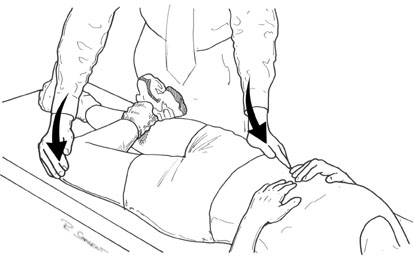The Patrick’s Test is a physical examination to determine the presence of sacroiliac joint dysfunction in patients with lower back pain. It is important to evaluate all sources of lower back pain and eliminate possibilities Common sources of lower back pain include lumbar facet dysfunction, lumbar ligament instability, lumbar degenerative disc disease and sacroiliac joint dysfunction.
The sacroiliac joint is a synovial joint formed by the articular surfaces of the sacrum and ilium. 
Trauma is the most common cause of SI dysfunction. Patient often times report falling directly onto their buttucks or being involved in a rear end motor vehicle injury.
Symptoms of SI joint dysfunction include mild to moderate pain, unilateral in nature, aggrevated by prolonged sitting often times referred into the buttuck and posterior thigh.
The Patrick’s Test is performed by flexing the patients leg and putting the foot of the tested leg on the opposite knee. Pressure is applied on the superior aspect of the tested knee joint lowering the leg into further abduction.

The test is positive if there is pain at the hip or sacral joint, or if the leg can not lower to the point of being parallel to the opposite leg.
At the Centeno-Schultz Clinic, sacroiliac joint dysfunction is treated with core stabilization, restoration of muscle imbalances and prolotherapy.

